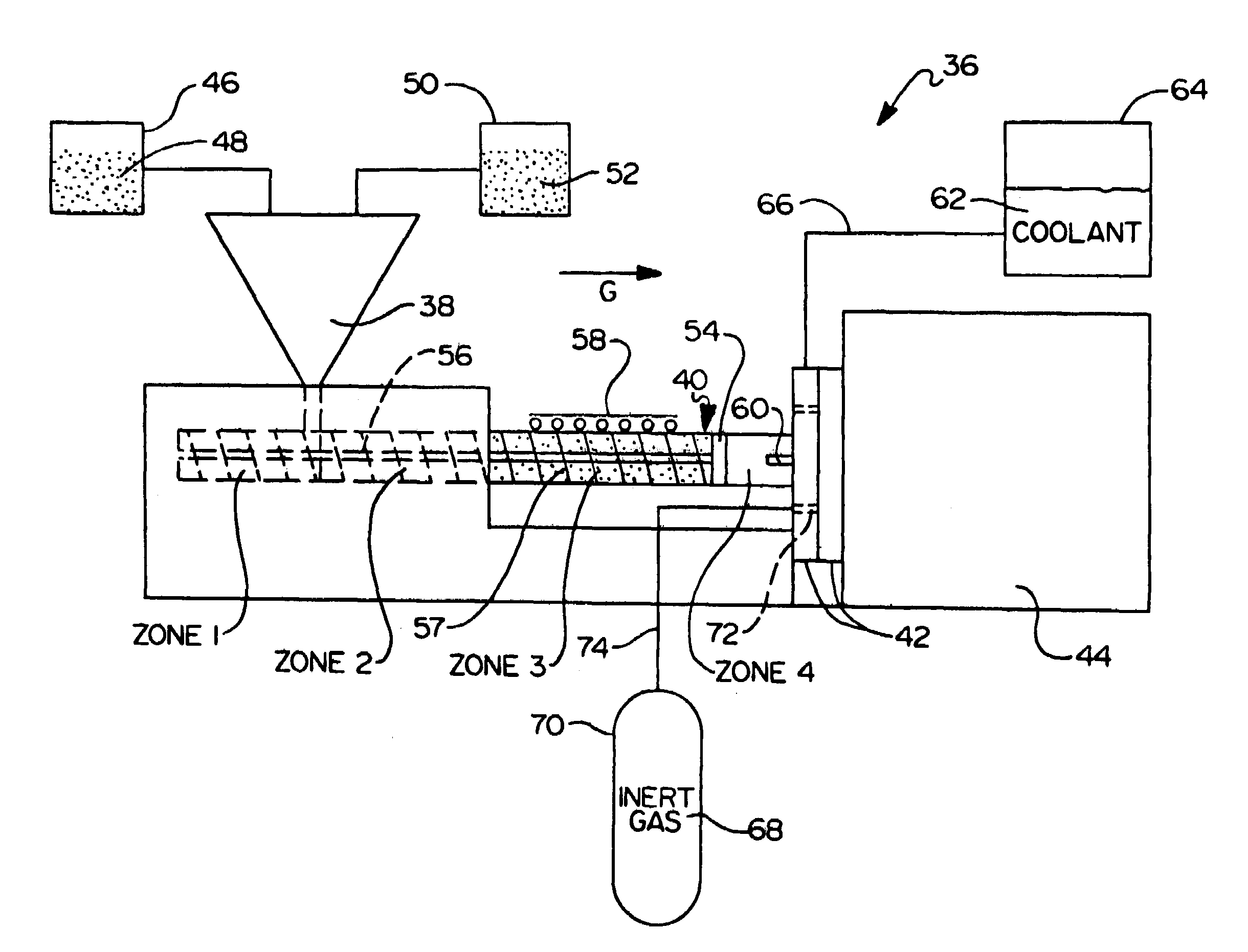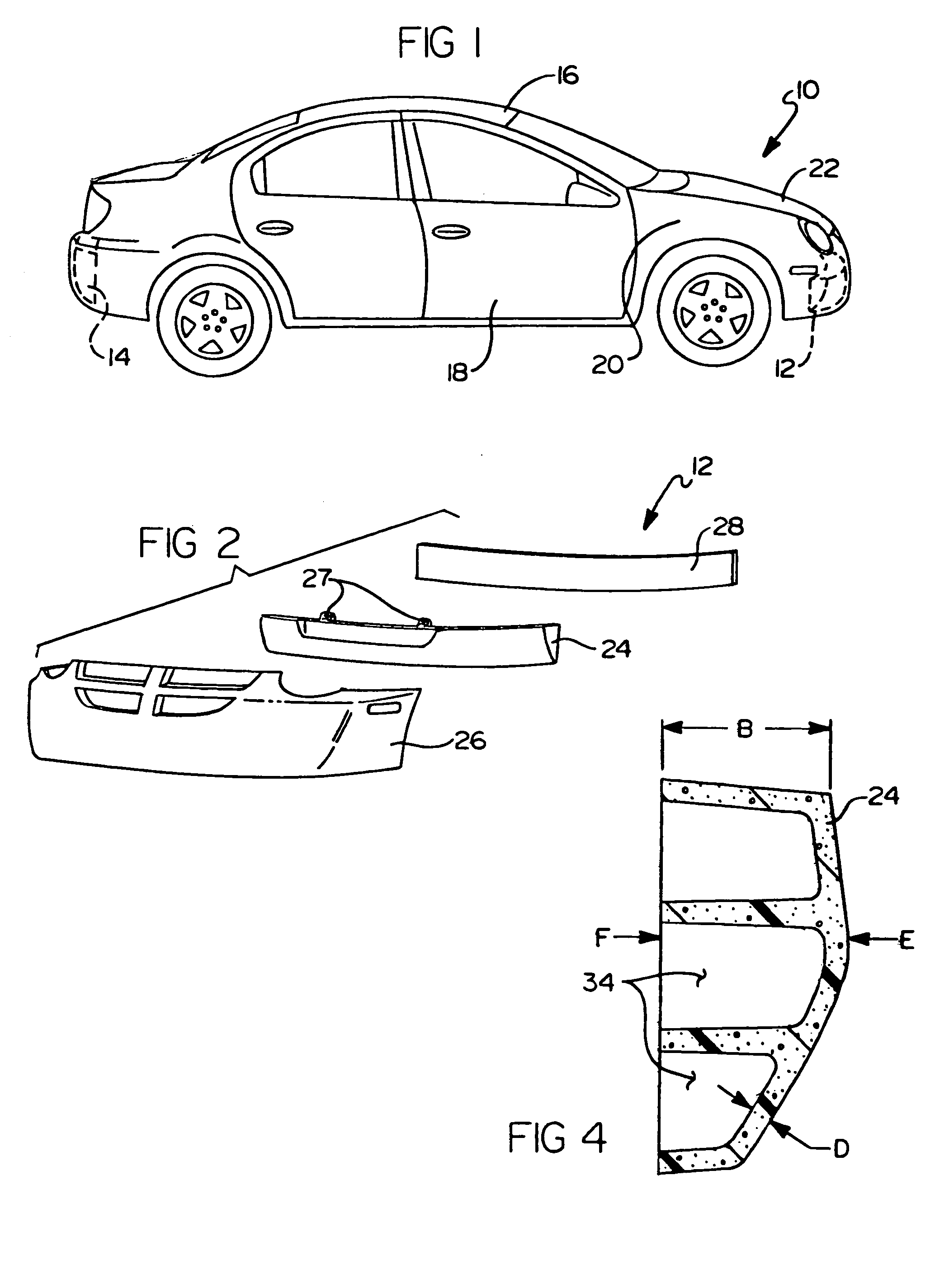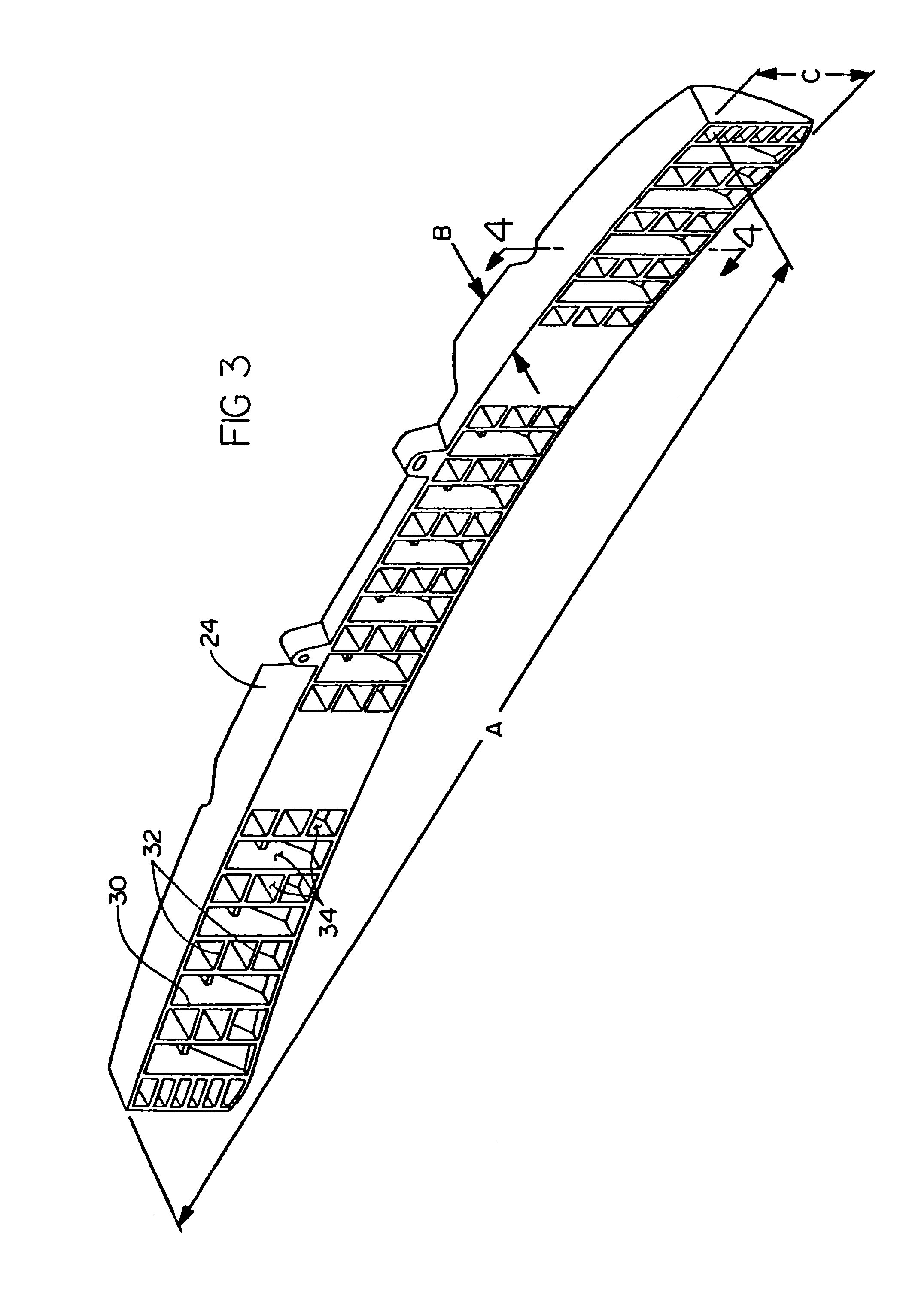Molded foam vehicle energy absorbing device and method of manufacture
a technology of energy absorption device and molded foam, which is applied in the direction of bumpers, manufacturing tools, vehicular safety arrangements, etc., can solve the problems of increasing the cost of finished parts, increasing the cost of foam bead materials, and long mold cycle time, so as to reduce the cost of base materials and reduce the mold cycle time. , the effect of less cos
- Summary
- Abstract
- Description
- Claims
- Application Information
AI Technical Summary
Benefits of technology
Problems solved by technology
Method used
Image
Examples
Embodiment Construction
[0020]The following description of the preferred embodiments is merely exemplary in nature and is in no way intended to limit the invention, its application, or uses.
[0021]As best seen in FIG. 1, according to a preferred embodiment of the present invention, a molded foam vehicle energy absorbing system 10 can be applied to various locations including a front bumper 12 and a rear bumper 14 of a vehicle 16. In alternate embodiments of the present invention, the molded foam vehicle energy absorbing system 10 of the present invention can also be used in a door panel 18, a body panel 20, or a hood 22 of vehicle 16.
[0022]As seen in FIG. 2 in the preferred embodiment, a foam member 24 is formed and shaped to be inserted and / or received within a bumper fascia 26. In the embodiment shown, bumper fascia 26 having foam member 24 inserted therein, is supported from a bumper plate 28 of front bumper 12. Foam member 24 is retained within bumper fascia 26 by friction fit in close conformity to the...
PUM
| Property | Measurement | Unit |
|---|---|---|
| time | aaaaa | aaaaa |
| injection time | aaaaa | aaaaa |
| thicknesses | aaaaa | aaaaa |
Abstract
Description
Claims
Application Information
 Login to View More
Login to View More - R&D
- Intellectual Property
- Life Sciences
- Materials
- Tech Scout
- Unparalleled Data Quality
- Higher Quality Content
- 60% Fewer Hallucinations
Browse by: Latest US Patents, China's latest patents, Technical Efficacy Thesaurus, Application Domain, Technology Topic, Popular Technical Reports.
© 2025 PatSnap. All rights reserved.Legal|Privacy policy|Modern Slavery Act Transparency Statement|Sitemap|About US| Contact US: help@patsnap.com



